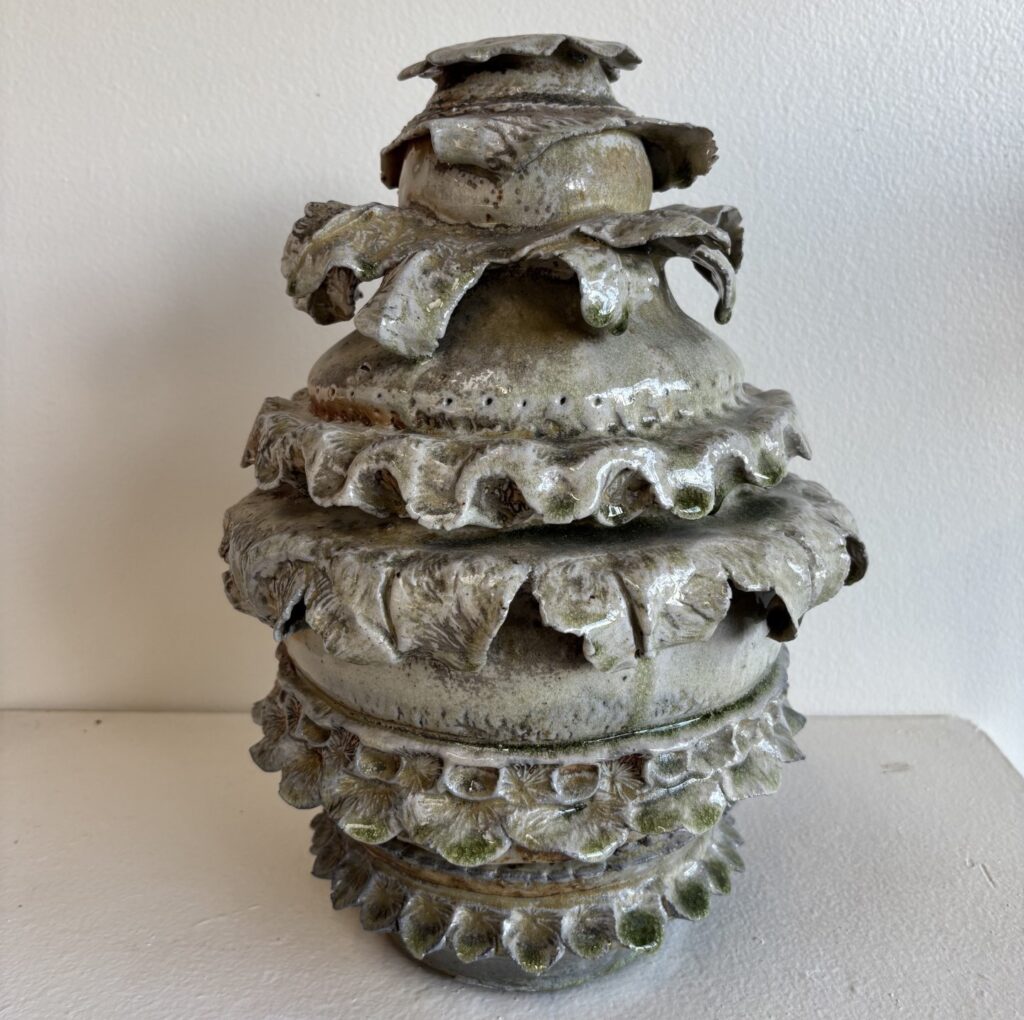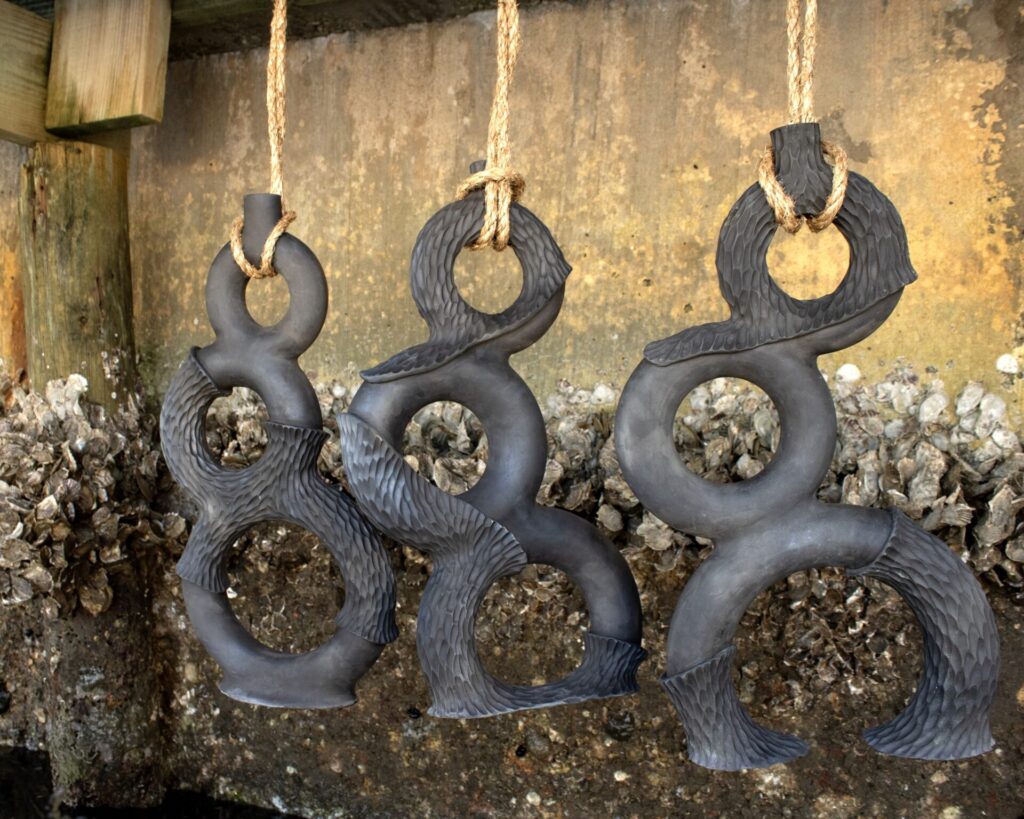Nina Samuels and Charles Morrison: Earth and Ocean
Opening Reception: Saturday, August 9, from 5-9pm
On View: August 9 – September 28
Morean Center for Clay
420 22nd St. South
Charles Morrison:

With a deep reverence and respect for those who came before us, I work to remind viewers of a previous time. I encourage you to remember your ancestors and their traditions. Try to remember their folktales and beliefs, their spirituality and medicines. It is easy to think we are so much further along than any ancient civilization and that there’s nothing to be learned from these people. However, I assure you, many of the answers we seek today remain evident in our past, if only we would take a moment to look at where we came from.
“A people without knowledge of their past history, origin and culture, is like a tree without roots” – Marcus Mosiah Garvey
Creating pieces that ignite an innate feeling of remembrance; I hope to invoke in viewers the memory that we’ve been here before. I feel this is an important memory to recover because of the vast amounts of knowledge and wisdom that our ancestors possessed. When we realize that so much of them is still alive in us today, we can bring awareness to this reality and make efforts to rebuild this sacred connection to our roots. By remembering who we are and where we come from, we are able to know where we stand today and where we are going.
With a series of textures, designs, hand and finger prints, my clay vessels and Ancestral Totems are covered in a vocabulary of mark making that reference the original civilizations and indigenous peoples of the world. In an age where humanity seems more desperate than ever for answers about which way to go, what to do, and who to trust; I present works that act as primordial messengers, carrying with them the spirit of an ancient time and the reminder to give thanks and travel wise!
About Charles Morrison
Charles Morrison is a multi-disciplinary artist originally from the Chicago area. Receiving his Bachelors in sociology From Saint Joseph’s College in Rensselaer, Indiana in 2017, Charles first started working with clay in 2016. He has since exhibited throughout the Midwest in Wisconsin, Illinois, and Indiana until taking an unexpected hiatus from his craft in 2020. Having recently relocated to Tampa in 2023, Charles quickly discovered the Morean Center for Clay and was able to pick up where he left off a few years prior.
Using clay as his primary means of communication, Charles also employs print, paint, and performance to convey his message. Taking great inspiration from the ancient world and indigenous cultures around the planet, he finds himself working to remind us today, of an ancient past. Creating vessels that appear to have been recovered from the bottom of the sea, or unearthed from years of compacted soil and earth beneath our feet, Morrison hopes to spark a deep remembrance in the viewers of his work, reminding them that we’ve been here before.
Nina Samuels:

Nature has always been at the center of my work. I often use wild clays and other natural materials as a medium to sculpt with. When I’m not using materials I have sourced from the earth, I’m making work inspired by it.
Having grown up by the ocean and now being an artist in coastal Florida, I use the sea as a starting point for my ideas. Anything from the humblest microorganisms to the most revered fish in the sea are a constant source of inspiration. Whether I am making anatomically correct versions of sea creatures or using an abstracted version of their forms in a sculpture, the fluid nature of all ocean species comes to life in clay.
The more I studied marine biology for my work, the more I marveled at it and desired to have another dimension of interaction in my work. I have begun making ceramic sculptures and submerging them underwater to serve as artificial marine reefs. This provides a habitat for the very creatures I am so inspired by.
About Nina Samuels
Nina Samuels is a ceramics and mixed media sculptor working with natural materials, sustainable practices, and ecological themes. Coming From Savannah, Georgia, she uses wild clay and other natural materials she has foraged across the southeast. Her work is inspired by the land, sea, and fauna of the natural world.
She received her BFA from Georgia Southern University in 2024. She has attended workshops, work-studies, and/ or residencies at Penland, Arrowmont, Peters Valley, Snow Farm, and the VCAC.
She is currently an artist in residence at the Morean Center for Clay where she is creating work inspired by the native sea life. She also creates ceramic sculptures that are submerged underwater and serve as an artificial marine reef for organisms.

